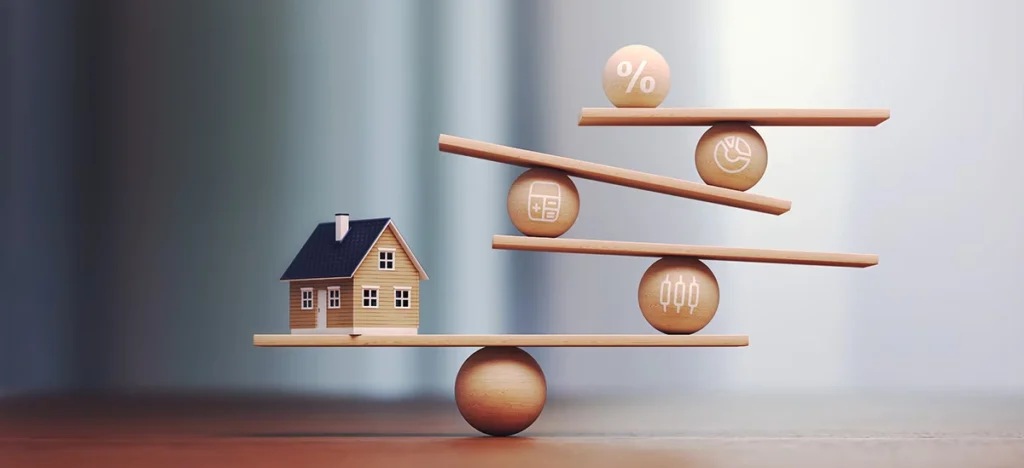Understanding the Loan-to-Value (LTV) ratio is essential for photography professionals aiming to finance their equipment wisely. This financial metric influences loan terms and interest rates, impacting overall business sustainability. By effectively managing LTV, photographers can secure necessary funds for high-quality gear, ultimately enhancing their craft. However, many may overlook how to evaluate their assets and leverage LTV strategically. Understanding Loan-to-Value Ratio (LTV) helps professionals make informed borrowing decisions, ensuring they maintain financial health while investing in their artistic growth. Exploring these aspects can lead to significant advantages in the competitive photography landscape.
Key Takeaways
- Understanding LTV allows photographers to secure optimal financing options for purchasing high-quality equipment.
- Knowledge of LTV helps in negotiating better loan terms and interest rates, reducing overall borrowing costs.
- A clear grasp of LTV enables informed decision-making for expanding or refinancing equipment assets.
- Familiarity with LTV fosters a competitive edge in the photography market by ensuring financial sustainability.
- Sharing LTV insights within the community enhances collective financial acumen and business growth.
The Importance of Financial Knowledge in Photography
Although many photography professionals focus primarily on their artistic skills, possessing financial knowledge is equally essential for long-term success. Understanding the financial aspects of running a photography business can greatly impact sustainability and growth. Professionals who grasp budgeting, pricing strategies, and cost management are better equipped to make informed decisions that enhance profitability. This financial acumen fosters confidence, allowing photographers to invest in quality equipment and marketing efforts. Additionally, knowledge of financial principles creates a sense of community among peers, as they can share insights and strategies for overcoming common challenges. Ultimately, integrating financial understanding with artistic talent not only strengthens individual careers but also contributes to a thriving photography industry, where professionals feel empowered and connected.
Understanding Loan-to-Value Ratio (LTV) Explained
Financial knowledge plays a significant role in the success of photography professionals, and one of the key concepts to grasp is the Loan-to-Value Ratio (LTV). LTV is a financial metric that compares the amount of a loan to the appraised value of an asset, typically expressed as a percentage. For photographers seeking to finance equipment, understanding LTV is vital, as it directly influences loan terms and interest rates. A lower LTV ratio often results in more favorable financing conditions, while a higher ratio may indicate higher risk for lenders. By comprehending LTV, photography professionals can make informed decisions, ensuring they secure the best possible financing options that align with their creative aspirations and business goals.
How LTV Affects Equipment Financing for Photographers
When photographers consider financing new equipment, understanding how the Loan-to-Value Ratio (LTV) influences their options becomes essential. The LTV ratio reflects the proportion of a loan compared to the appraised value of the equipment being financed. A lower LTV indicates reduced risk for lenders, often resulting in more favorable terms, such as lower interest rates or higher loan amounts. Conversely, a higher LTV may lead to stricter lending criteria and potential rejection of the financing application. By grasping the implications of LTV, photographers can better position themselves to secure the necessary funding for their equipment needs. This knowledge empowers them to make informed decisions, ensuring their business remains competitive and responsive to evolving client demands.
Evaluating Your Photography Business Assets With LTV
Understanding the significance of valuing photography business assets through the lens of the Loan-to-Value Ratio (LTV) can greatly enhance a photographer’s financial strategy. By effectively evaluating these assets, photographers can make informed decisions that align with their business goals.
- Assess the current market value of photography equipment and studio space.
- Determine the proportion of borrowed funds against total asset value.
- Identify opportunities for refinancing or expanding equipment inventory.
A solid grasp of the Loan-to-Value Ratio empowers photographers to navigate their financial landscape with confidence. This knowledge fosters a sense of belonging within the photography community, as professionals share insights and strategies to optimize their business assets. Embracing LTV evaluation ultimately strengthens the foundation of their artistic endeavors.
Strategies for Maximizing LTV in Photography Investments
Maximizing the Loan-to-Value Ratio (LTV) in photography investments requires strategic planning and careful consideration of asset management. Photographers can enhance their LTV by focusing on high-quality equipment that retains value over time, such as professional cameras and lenses. Regular maintenance and timely upgrades can further bolster asset longevity and worth. Additionally, cultivating a strong client base and showcasing a diverse portfolio can increase revenue potential, allowing for larger investments. It is also beneficial to leverage business relationships with suppliers for favorable financing terms. Ultimately, understanding Loan-to-Value Ratio (LTV) empowers photography professionals to make informed decisions, thereby fostering a sense of community and shared success within the industry. By applying these strategies, photographers can maximize their investment potential.
Frequently Asked Questions
How Can I Improve My LTV Ratio Over Time?
To improve an LTV ratio over time, one should increase property value through enhancements, pay down existing loans, and maintain a solid credit score. These actions collectively contribute to a healthier financial standing and better borrowing opportunities.
What Is Considered a Good LTV Ratio for Photographers?
A good loan-to-value ratio (LTV) for photographers typically falls between 70% and 80%. This range signifies a balanced approach, allowing for both manageable debt and sufficient equity, fostering financial stability and growth opportunities.
Can I Use LTV for Non-Equipment Investments?
Loan-to-value ratios can be applied to non-equipment investments, offering insights into risk and financing potential. Understanding Loan-to-Value Ratio (LTV) helps individuals make informed decisions, fostering a sense of community and shared financial wisdom.
How Often Should I Reassess My LTV Ratio?
Reassessing the loan-to-value (LTV) ratio should occur regularly, ideally annually or after significant financial changes. This practice guarantees accurate financial insights, enabling informed decisions and fostering stability within one’s investment portfolio.
Does LTV Influence Insurance Premiums for Photography Gear?
The loan-to-value ratio can influence insurance premiums for photography gear. A higher LTV may indicate greater risk, potentially leading to increased premiums, while a lower ratio might result in more favorable insurance rates for equipment coverage.
Conclusion
To sum up, understanding the Loan-to-Value ratio is essential for photography professionals aiming to finance their equipment effectively. By grasping LTV, photographers can secure better loan terms, reduce financial risk, and make informed investment decisions. This financial acumen not only enhances their ability to acquire high-quality gear but also fosters a sustainable business model. Ultimately, a strong knowledge of LTV empowers photographers to thrive in their profession and cultivate a supportive community for shared success.
You May Also Like To Read:

